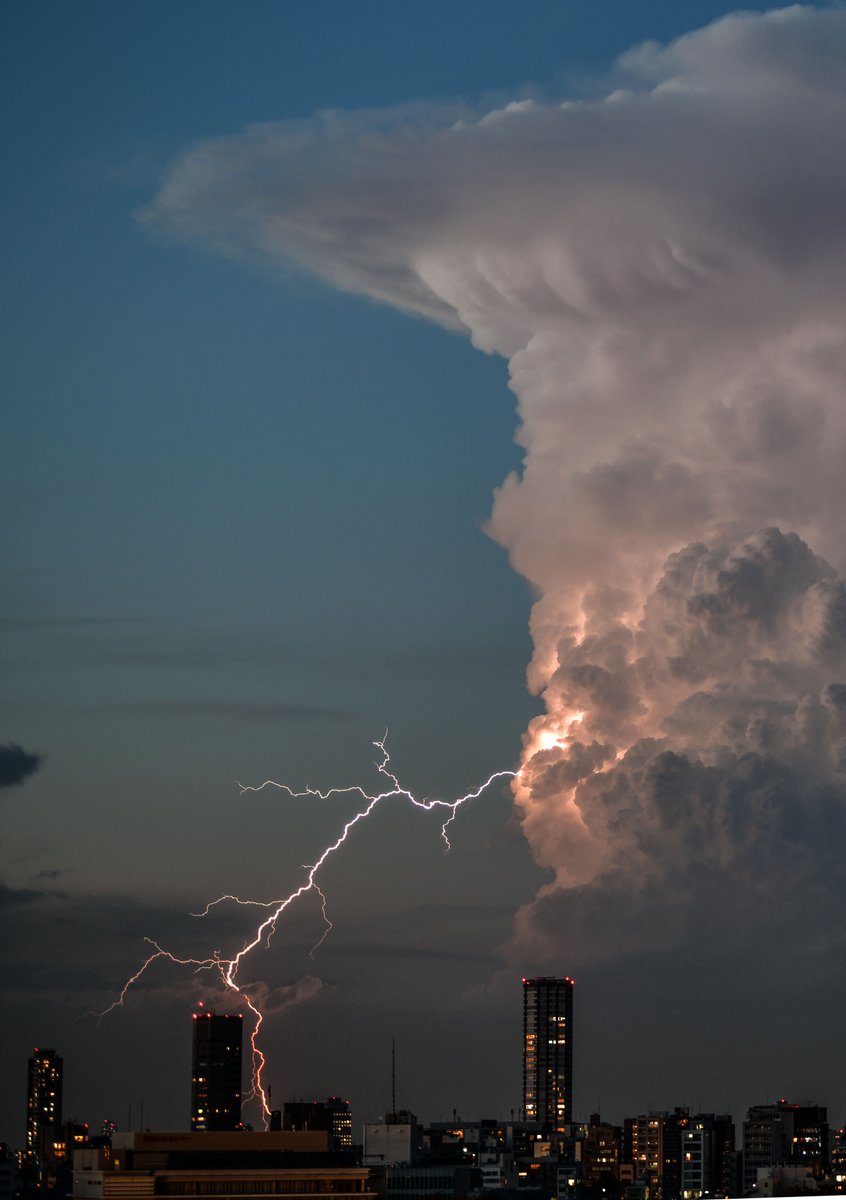
A Striking Photo of an Enormous Cumulonimbus Cloud over Tokyo by
Definition: Dark-based storm cloud capable of impressive vertical growth and heavy precipitation Description & Characteristics. Cumulonimbus clouds are responsible for stormy weather. If you're looking up at a cloud that's causing rainy and windy conditions, creating hail, thunder, and lightning, you're in close proximation of a cumulonimbus cloud.

Premium Photo Cumulonimbus clouds with lightning
The cumulonimbus cloud, or thunderstorm, is a convective cloud or cloud system that produces rainfall and lightning. It often produces large hail, severe wind gusts, tornadoes, and heavy rainfall. Many regions of the earth depend almost totally upon cumulonimbus clouds for rainfall.
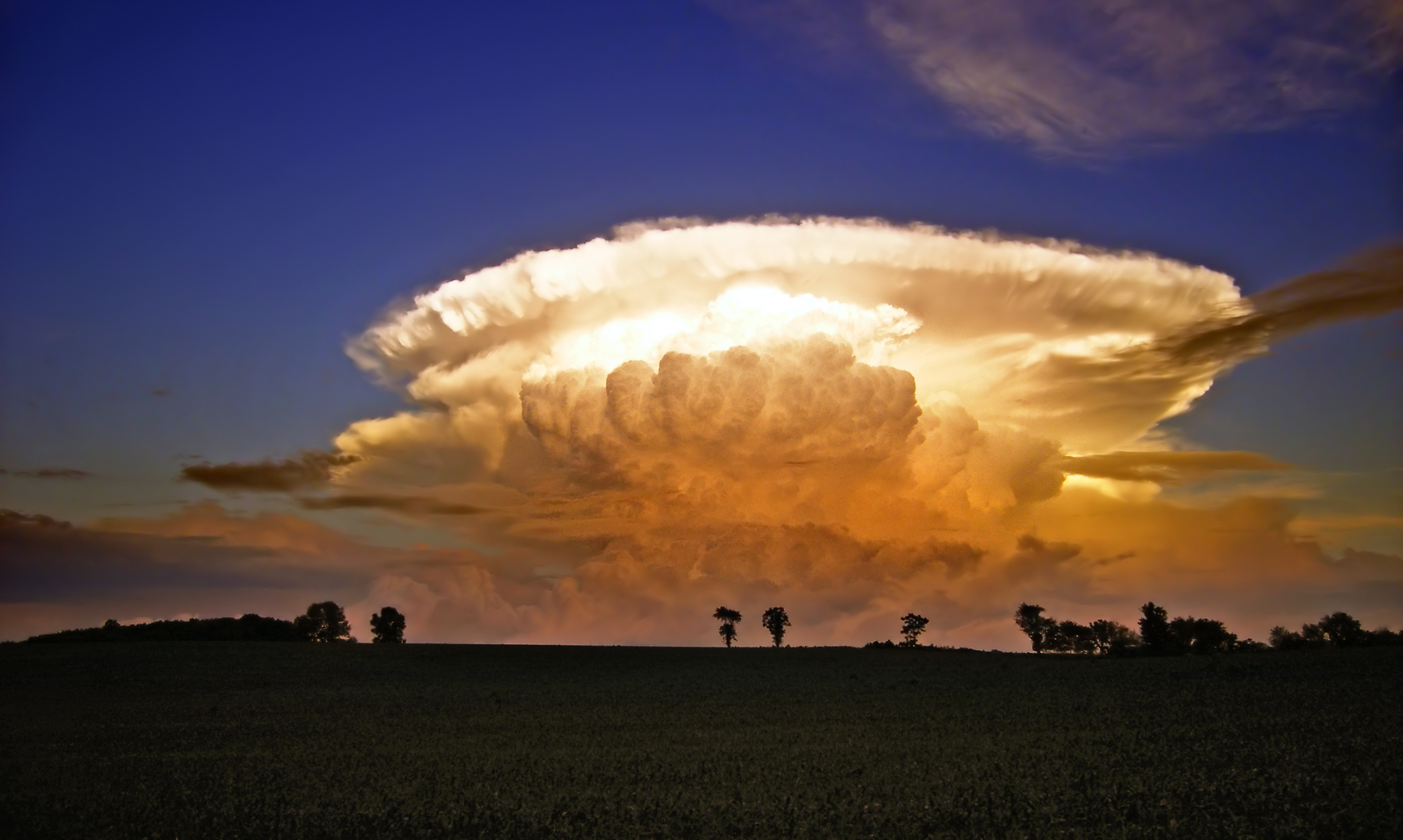
Cumulonimbus Clouds & Their Features Higgins Storm Chasing
Not all cumulonimbus clouds have lightning and thunder. Such storms are technically not thunderstorms. However, in this book we will use the word thunderstorm to mean any cumulonimbus cloud, regardless of whether it has lightning. More complex thunderstorms can have one or more updraft and downdraft regions.

Cumulonimbus Lightning Cloud Lewisville, TX March 27, 2014 YouTube
Cumulonimbus clouds are one of the most recognisable cloud types, characterised by their threatening anvil-shaped tops and the torrential rain, hail, thunder and lightning that they often.

photo santiago borja, 2016 national geographic nature photographer of
Cumulonimbus clouds are menacing looking multi-level clouds, extending high into the sky in towers or plumes. More commonly known as thunderclouds, cumulonimbus is the only cloud type that can produce hail, thunder and lightning. The base of the cloud is often flat, with a very dark wall-like feature hanging underneath, and may only lie a few.

Lightning In Cumulonimbus Stock Image C001/5061 Science Photo Library
These clouds are capable of producing lightning and other dangerous severe weather, such as tornadoes, hazardous winds, and large hailstones. Cumulonimbus progress from overdeveloped cumulus congestus clouds and may further develop as part of a supercell. Cumulonimbus is abbreviated Cb . Appearance Cumulonimbus calvus cloud in Monterrey, Mexico.
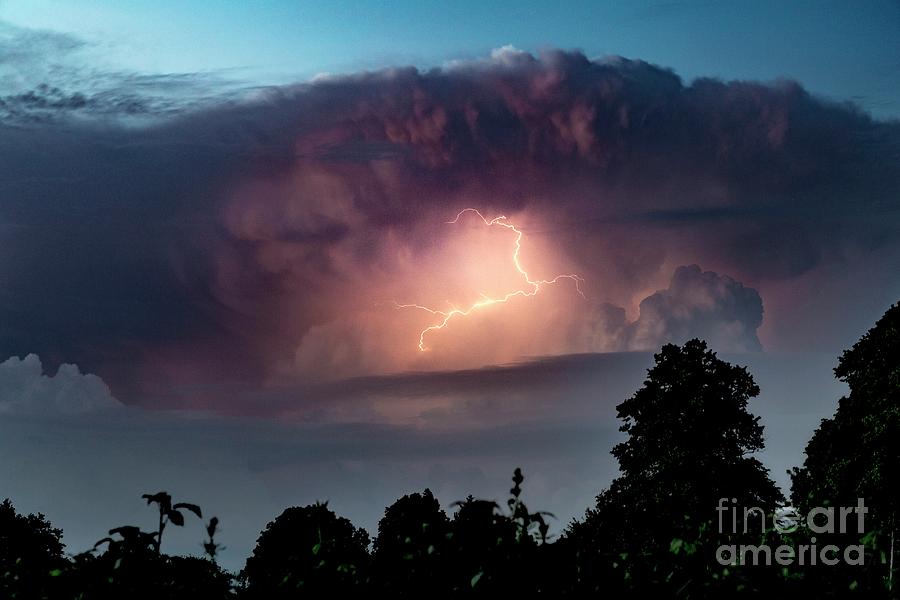
Lightning And Cumulonimbus Clouds Photograph by Stephen Burt/science
A cumulonimbus overhead that produced lightning 30 s earlier at Klagetoh in northeast Arizona (© R. Holle) Full size image. All clouds described here are cumulus whose main features are rounded tops on tall clouds with updrafts. Cumulus clouds are shaped with upper boundaries that appear in puffs, mounds, or towers that have a vertical or.

Lightning bolt in the night sky as a thunderstorm cumulonimbus cloud
A lot of things go on in our afternoon sky, on the Gulf Coast. It's the water cycle in action as the sun heats the earth and a south wind and seabreeze carry.

Upward Lightning from a Cumulonimbus thundercloud. From the anvil of a
Cumulonimbus is composed of water droplets and ice crystals, the latter almost entirely in its upper portions. It also contains large water drops, snowflakes, snow pellets, and sometimes hail. The liquid water forms may be notably supercooled. Within a cold air mass in polar regions, the fibrous ice crystal structure may extend virtually.

A thunderstorm cumulonimbus cloud is illuminated by lightning near
Cumulonimbus clouds are known for producing lightning, specifically intracloud lightning, which occurs within the cloud itself. This type of lightning plays a significant role in creating right-moving storm systems that can impact weather patterns and cause heavy rainfall, hailstorms, and even tornadoes.

(4) Lightning bolts from the huge cumulonimbus, photographed by pilot
Cumulonimbus clouds are also known as thunderheads due to their unique mushroom shape. These clouds often produce lightning in their heart. This is caused by ionized droplets in the clouds rubbing.
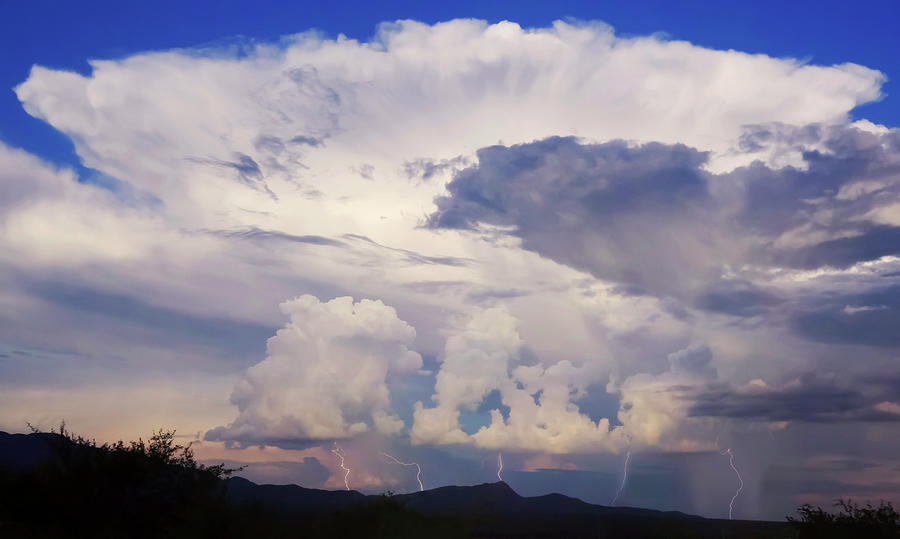
A Cumulonimbus Cloud and Lightning, Hereford, AZ, USA Photograph by
Cumulonimbus clouds are also called thunderstorms, since they usually have lightning and thunder associated with them. Cumulonimbus clouds develop from cumulus humulus and cumulus congestus clouds. Read More tropical cyclones In climate: Conditions associated with cyclone formation All these conditions may be… Read More
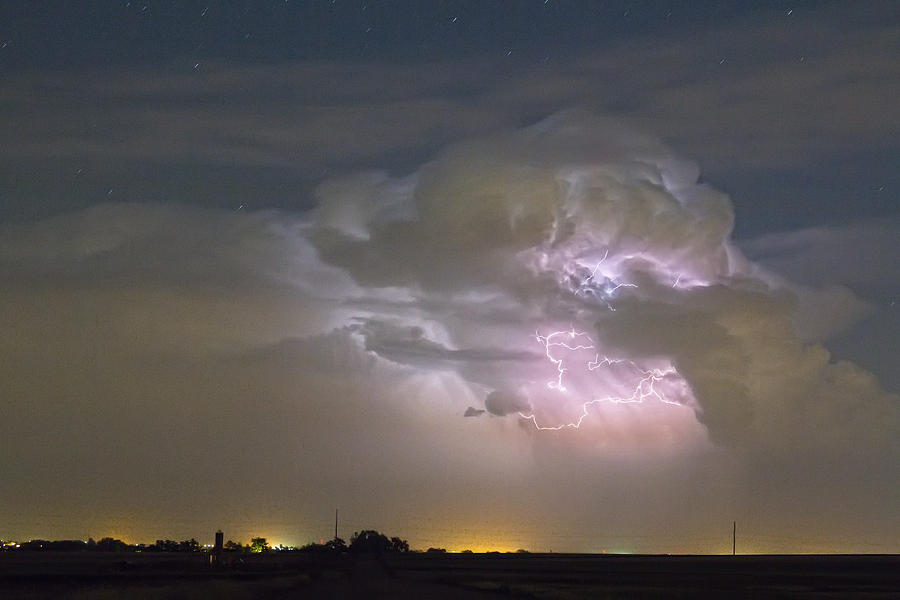
Cumulonimbus Cloud Explosion Photograph by James BO Insogna
Lightning is usually associated with cumulonimbus clouds (thunderclouds), but it also occurs in stratiform clouds (layered clouds with a large horizontal extent), in snowstorms and dust storms, and sometimes in the dust and gases emitted by erupting volcanoes.

Lightning illuminates a cumulonimbus cloud over Corio Bay, Victoria
They are most commonly accompanied by thunderstorms, strong gusts, turbulence, hail, and lightning. Cumulonimbus clouds represent a hazard to aviators for all of these reasons. It is recommended to avoid them by a large margin. Just what makes cumulonimbus clouds so dangerous?

Storm Clouds Lightning Lightning leaps out of this towering
Transcript NARRATOR: The typical thunderstorm cloud is the cumulonimbus, or thundercloud. Like many clouds, the cumulonimbus develops when warm air rises from the surface of the earth. As the warm air rises, it cools, and water vapor condenses into minute cloud droplets.

Isolated cumulonimbus cloud with positive lightning Clouds
The cumulonimbus cloud is formed by water vapour that air currents carry upwards, and these clouds can produce dangerous lightning and severe tornadoes. When cumulonimbus clouds develop even further they can result in a supercell, which are also referred to as rotating thunderstorms - extremely severe storms that can cause extreme damage. The cumulonimbus cloud,